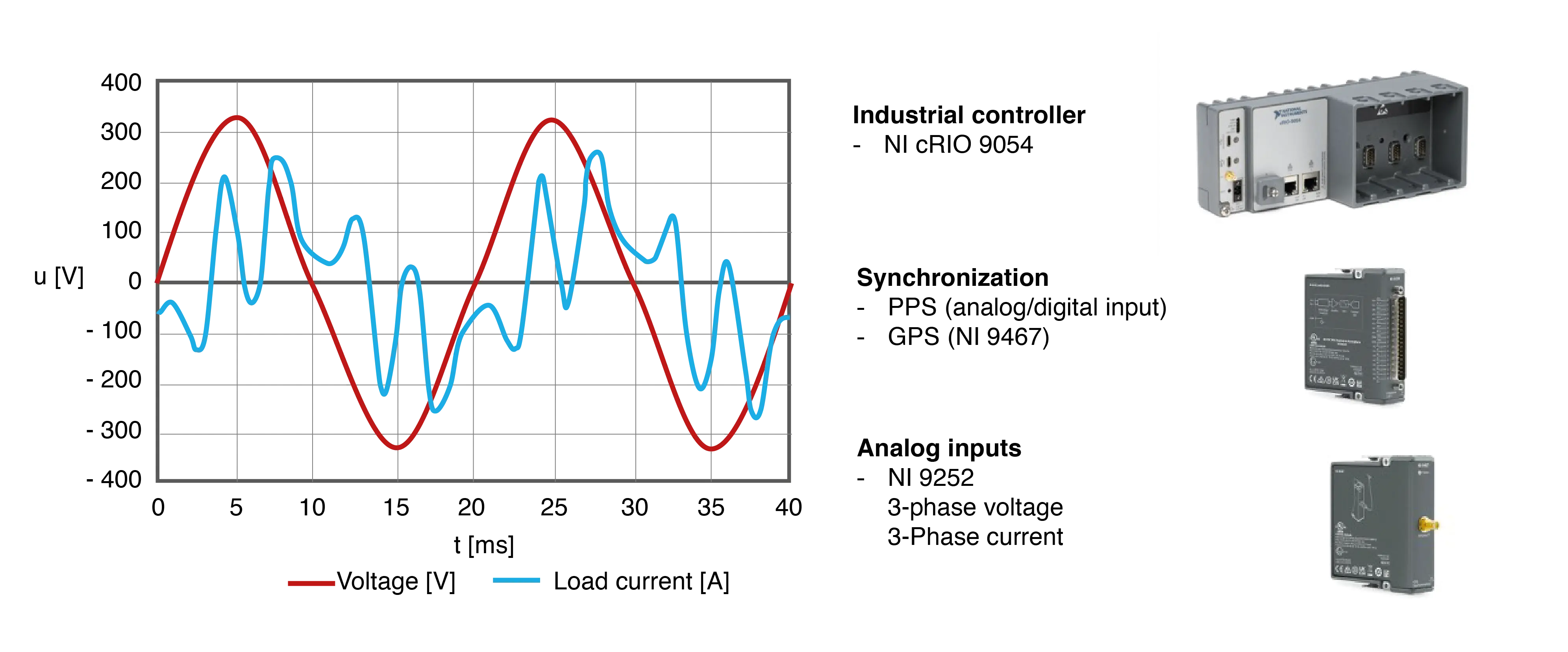Improving the accuracy and reliability of instruments for monitoring of electrical power grids
The Institute of Energy Systems and Fluid Engineering (IEFE) at the ZHAW School of Engineering is working with the Swiss Federal Office of Metrology (METAS) to develop a measuring device that can monitor and analyze electricity grids with a high degree of reliability, which are more and more often ‘corrupted’ with undesirable oscillations at high frequencies caused by photovoltaic and other power electronic components, such as electric cars, battery energy storage systems etc. The aim is to make an important contribution to future stabilization of our electricity grid operated in above described environment.

Renewable energies are indispensable for our electricity supply. However, for all their economic and ecological benefits, they also present challenges. For example, the electricity generated by a photovoltaic system and converted by an inverter does not have the same high grid quality as the electricity generated by a ‘rotating’ generator. This is because the power electronic circuits of inverters have no rotational inertia and switch at a high frequency. As a result, harmonic and interharmonic oscillations enter the power grid and ‘pollute’ it.
The grid quality was previously measured using a sine wave model. The ‘contamination’ caused by the PV current results in the sine signal becoming ‘blurred’. The more blurred the grid quality is, the less suitable the sine signal is as a comparative variable. For this reason, grid quality must be determined in future using new measurement methods and measuring devices.
These include time-synchronized pointer measuring devices - so-called Phasor Measurement Units (PMU). They can detect and correctly identify very fast transients. Thus, the PMUs monitor the power grid and constantly analyze what is happening in the grid. Despite the pollution caused by the power electronics, they recognize when a problem - such as a power plant failure or a short circuit - occurs. They also contribute to a better understanding of how the electricity flows through the grid and whether there are any bottlenecks.
The PMUs available today are still too inaccurate and too slow to recognize potential threats to grid stability in short time. This is where the IEFE project comes in. The research team wants to develop a new PMU prototype that is highly accurate under dynamic conditions (frequency errors below 100 mHz). On the other hand, the prototype should send the data back and forth to the web server with a low latency of significantly less than 100 ms. And, last but not least, the new PMUs must remain cost-effective so that they can be installed at important points in the network.
The PMUs developed by the ZHAW should therefore provide accurate and synchronized measurements of current and voltage even in ‘dirty’ power grids and help to ensure that the power grid remains secure and stable.
Project name
Measurement and quantification of inertia on electrical power systems to support integration of renewables (QUINPORTION)
Project team at the ZHAW
Miguel Gonzalez, Rafael Segundo, Artjoms Obusevs, Petr Korba
Project partners
Eidgenössisches Institut für Metrologie (METAS)
Swissgrid AG
Hitachi AG
Funding partner
Bundesamt für Energie (BFE)
Project duration
November 2024 to 2026
Publication
https://www.zhaw.ch/de/forschung/forschungsdatenbank/projektdetail/projektid/5560/